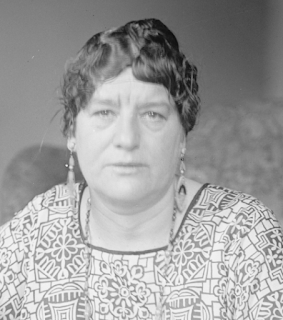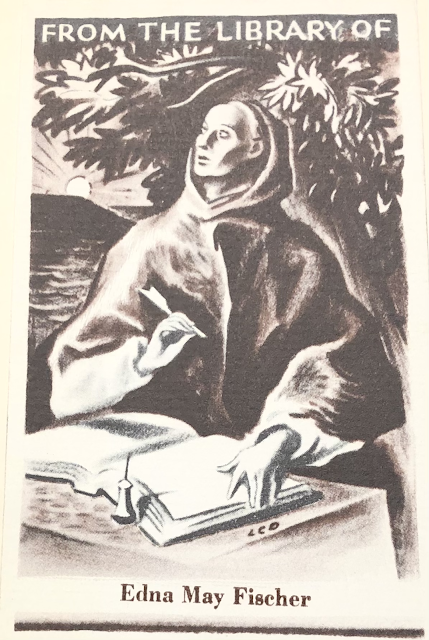I may be cheating calling this a First Book, but it most definitely is this writer's only crime novel written for an adult audience. So it's a qualified First of sorts. And yes, it's the very same Robert Arthur who gave us The Three Investigators and many anthologies attributed to Alfred Hitchcock filled with stories intended for younger readers. I had to visit the tribute website for Arthur to verify this book was written by the same man I knew from that boy sleuth series of books I devoured when I was a pre-teen. There I also learned that it's actually a revised and expanded version of an earlier novella written for Mercury Magazine (more on that later.)
Somebody's Walking over my Grave (1961), a much better title than the original, is influenced by and descended from the long line of fictional American private eyes. Max London, our detective protagonist, supplements his income as a private investigator with work as a photographer and journalist. At the start of the book Max is helping his brother with a story on the death of his brother's girlfriend. Pete London is convinced that she was murdered by a notorious gangster Tony Reiner who will end up having a large role in the case L Max will soon be handed. The story of Max, Pete and the death of Millicent, Pete's fiancee, serves an extraneous subplot that will ultimately reveal a secret that Max is hiding.
When the novel opens we find Max taking photographs of model Selma Carle lying on the beach completely nude as the ocean waves "curl up to lick daintily at her naked body." Her risque poses are meant to duplicate the sad death of Millicent who drowned when she supposedly fell off Tony Reiner's yacht. Max and Pete think she was thrown over. Selma seems like an extraneous character, too, but she'll turn up later in the story in a surprising link to the multiple crimes that are committed throughout. She's the character who utters the line which gives the book its title when she feels an unnatural chill on the sunny beach where Max is photographing her. She mentions the superstition of somebody walking over your grave when you get a chill as something her mother used to tell her. It's a not only an apt title it's an eerie foreshadowing of Selma's fate.
The main plot involves Max trying to buy back some IOUs for Jonothan Grigsby, a wealthy businessman and innovative inventor in the world of television sets. Grigsby has invented "a lens that will change any black-and-white television broadcast into color at the receiver." Patricia Parson, Grigsby's business partner, attempts to explain it all to Max but he tells her to skip it. I was glad he did that because the television invention is another subplot element that, in the end, also has nothing to do with the real story either. And the few sentences Patricia starts to rattle off sound like science fiction than anything resembling real physics.
 |
Dally with a Deadly Doll by John Mill
is the other book you get in the Ace Double
with Arthur's revised novel
| |
|
It's those IOUs left behind by Grigsby's first wife Larraine that the story is all about. Larraine was considerably younger than Rigsby (what else is new?) and addicted to life in the fast lane. She spent most of her brief life drinking, driving fast, gambling and spending time with men other than her husband. One night after a hedonistic night of roulette, poker and booze she drove off the road, crashed her car and died in a blazing car wreck. Now Grigsby needs to clean up the mess she left behind and pay off her debts
Max wheels and deals with gambling hustler Marshall Dunn to buy back the IOUs at a bargain basement price. Dunn wants an outrageous $50,000 (more than the total debt) but Grigsby is certain Dunn will accept only a portion of that. He knows that Dunn is desperate for money because he too owes someone. And it turns out to be none other than Tony Reiner.
Shortly after Max gets Dunn to accept the discounted pay-off Dunn turns up dead. Max is found at the scene of the crime unconscious and his gun prove to be the murder weapon used to kill Marshall Dunn. It appears to be one of those messy frame-ups private eyes are always falling victim to. Max then has to work his tail off trying to prove he was set up and find out who killed Dunn and made off with the money he was carrying to buy back the IOUs.
For the most part Somebody's Walking over My Grave is typical of private eye novels of this era. Plenty of violence, fistfights galore, Max survives several conks on the head, women are put in peril, he beds a couple of them and we get one dirty joke about an erection from one of his sex partners. This made me laugh out loud but at the same time seemed more like something you'd find in a 1970s book and not one from 1961...or even 1956. (Yes, it's in the original version. I had to check.)
As a detective novel it works well and there are even some clever and innovative clues like one involving cigarettes that are stamped with someone's name. Max first thinks the letters left behind on the butt of the used cigarette are s-o-n perhaps indicating Patricia Parson was at the scene of Dunn's murder. But when he finds a box full of new cigarettes with the same personalized stamp and can examine the full name he finds that he was mistaken in what he thought the letters were. It was a rather nifty clue based on typography that is just like the kind of arcane, barely noticeable thing the Golden Age writers loved to employ in their detective novels.

In the final chapter Arthur decides to use the old gather the suspects and lecture to them scene once again hearkening back to the Golden Age. The denouement, typically long winded in explaining all the details of the several murders, comes with exactly the sort of shocking pronouncement you'd find in Carr, Christie, Queen or Brand. I had guessed two aspects of the solution but had not realized that both those aspects were intertwined. Max talks about a dead giveaway clue that should have tipped him off much earlier and might have prevented one of the deaths. And when he describes that one clue I practically slapped myself on the forehead for missing it. It's so obvious that it would never have made the twist in the final chapter a surprise at all.
FIRST VERSION: Robert Arthur's first adult crime novel originally appeared under the title Epitaph for a Virgin in Mercury Mystery Magazine (Sept. 1956) as the lead story. You can see Selma on the front cover illustration over there on the left. Though she is lying on the beach at the start of the book she's been decently clothed in a swimsuit or negligee in the photo and not scandalously naked. Took me a while to locate a cheap copy of this magazine. Several ignorant and greedy sellers are asking ludicrous amounts for reading copies of this digest sized magazine that contains nothing of any real value other than this oddity by Robert Arthur. I didn't read this version from start to finish, but rather flipped through the pages and I found nothing about Pete or Millicent. Apparently the original ending was slightly altered in Somebody's Walking Over My Grave but I didn't do a strict comparison of the two books. Later tonight I'll look it over and revise this section if I find anything drastically different.

While perusing the pages of the
Robert Arthur page
on a website that celebrates The Three Investigators I discovered that
Arthur was also a veteran writer of for the pulp magazines which I
don't think I knew at all. Maybe I saw the name on the cover of a pulp
years ago but probably thought it was some other Robert Arthur. Now I know it was the very same man. Robert Arthur (1909-1969) wrote over 100 stories using his own name and dozens more using a variety of pseudonyms that include Andrew Benedict, A. A. Fleming, Robert Forbes, Jay Norman and Pauline C. Smith. His work regularly appeared in nearly every pulp magazine that specialized in crime stories. From 1933 though 1948 Arthur was published in
Clues, Dime Mystery, Baffling Detective, Thrilling Detective, Double Detective, Popular Detective, and
Detective Fiction Weekly. I even found his name on the cover of an issue of the seminal
Black Mask. Throughout the 1950s and 1960s his stories appeared in three top selling mystery magazines that sported the names of Ellery Queen, Alfred Hitchcock and Mike Shayne in their titles. His work as a radio script writer won him an Edgar award and he would go on to helm the editorial staff at
Mysterious Traveler Magazine based on the radio program he worked on from 1942 to 1953. His radio work led to some script writing for TV shows including
Thriller and
Alfred Hitchcock Presents. Television and his Hitchcock association culminated in his work as editor for some of the first Alfred Hitchcock short story anthologies (for which he wrote introductions in the style of the Master of Suspense) and the creation of the series featuring the boy sleuths known as The Three Investigators.
More on Robert Arthur can be found on his daughter's tribute website here and various author pages on The Three Investigators fan site.









































